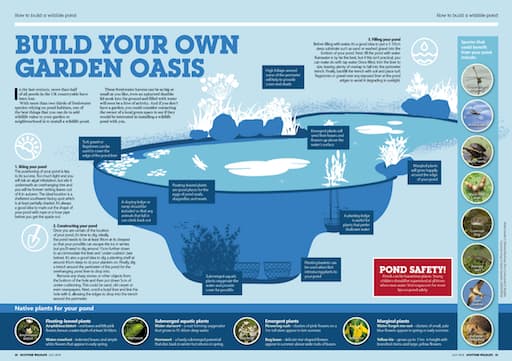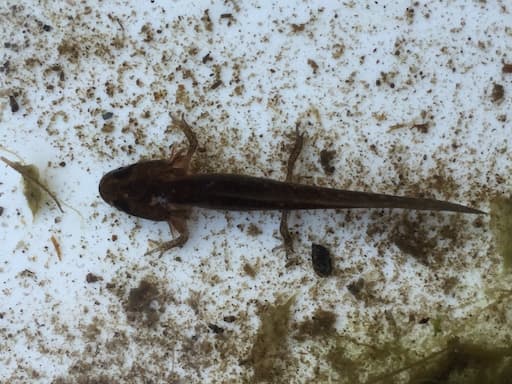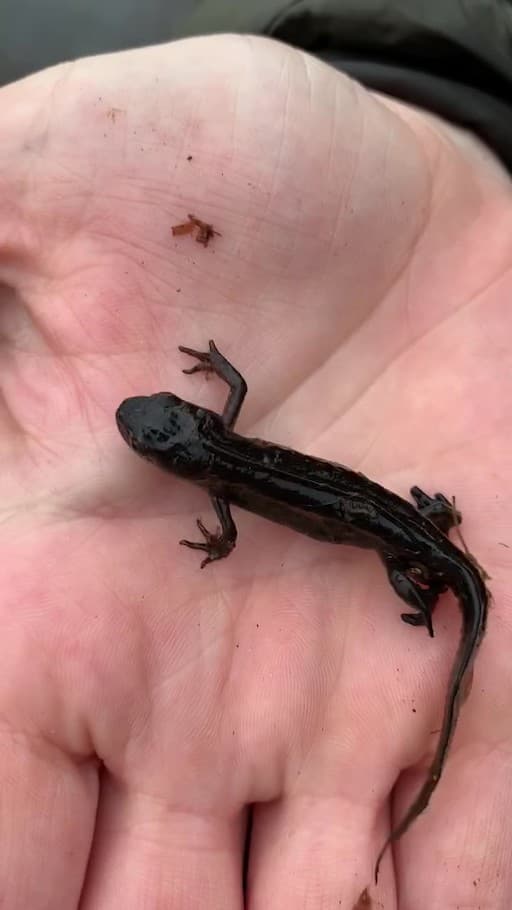Palmate Newt
The little guys of the newt world, palmate newts are less than 9 cm long. Both the males and females have a pink/orange belly with a few spots, but none on the throat.
They like shallow ponds on acidic ground, and Jock says they're more common on Bennachie than the common newt!
They breed between March-July, with the male putting on a fine courtship dance to attract a female. He develops black webs on his hind feet and a filament on the end of his tail.
The female will lay a few greyish/white eggs every day for a couple of weeks, wrapping them round plants. You can tell a newt larvae from a frog or toad tadpole by its feathery gills around its head. Unlike frogs and toads, newt larvae develop their front feet first. It takes the larvae around 6-9 weeks once they hatch to grow into air breathing youngsters or ‘efts’. They can live up to 10 years!
Having bred in ponds during spring, these wee chaps spend the rest of their time munching on minibeasts in woodland , tussocky grassland and marshes. They do eat frogspawn and the odd tadpole too.
They’re inactive in winter under stones or in compost heaps.
To find out more about palmate, common and great crested newts browse this information.
- British newts: an identification guide (Woodland Trust)
- Palmate Newt (Amphibian and Reptile Conservation)
- Palmate Newt - Lissotriton Helveticus (NatureSpot)
- Palmate Newt (British Trust for Ornithology)
- Palmate Newt (Froglife)
How to help amphibians
Frogs and toads are in trouble and need our help!
The Natural History Museum has great ideas on how to help! See their Ways To Help Frogs And Toads information.
Or, why not make a newt, frog and toad abode?
See the instructions from RSPB Make A House For Fogs And Toads.



This is part of the Amphibians In Spring information.